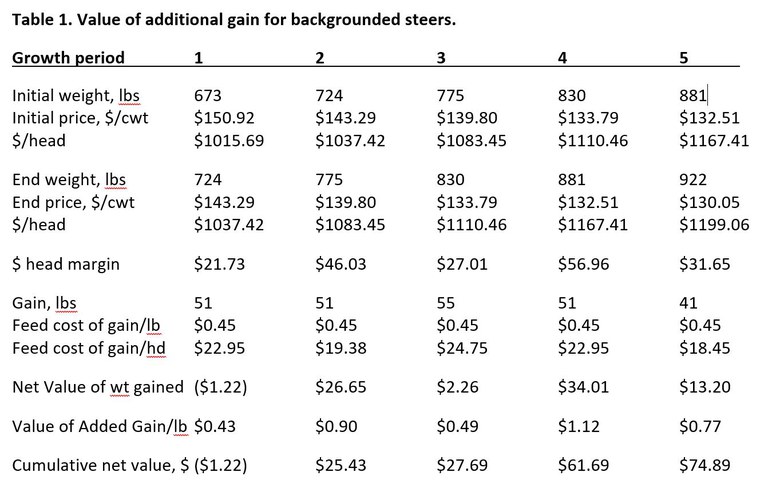The Value of Additional Gain for Backgrounding Cattle
Most calves change ownership two or more times in the production cycle. The cow calf producer usually sells at weaning or feeds the calf after weaning and sells a short time later. The backgrounder (or stocker) will feed calves for 60 – 200 days before selling to a finishing feedlot.
Backgrounders can influence the amount of weight gained by a calf depending on feed prices and market prices. Ultimately, it’s the cost of gain that determines what ration is fed.
- Calves gaining 1.5 pounds per day with $75 per ton hay and $75 per ton screenings net a feed cost of $0.45 per pound gained.
- Calves gaining 3 pounds per day with $75 per ton hay, $40 per ton silage and $4.75 per bushel corn net a feed cost of $0.38 per pound gained.
These costs are feed only and don't include yardage or interest expenses.
Estimating future value of calves is difficult with changing economies and variable feed costs. Unless calves are forward-priced or hedged, we use historical trends and biology to help forecast future prices.
This leads to calculating the value of additional gain. For these calculations, the USDA prices reported for ND Livestock Auctions were used and it located at Weighted Average Report (usda.gov).

In this example, the value of additional weight was greater than the feed cost of gain in the heavier weight periods. Cumulative net value increases as weights increase.
If market price decreases $4/cwt among all prices except the beginning market price, then the cumulative net value decreases from $74.89 to $38.01. When feed prices are high, adding value to calves by feeding to heavier weights is profitable when not including yardage costs.
When yardage costs are added at $0.45 per head ($0.15 per pound gained), the cumulative net value decreases accordingly. With decreased market price and increased yardage, cumulative net value further decreased from $38.01 to $15.49.
Feeding to heavier weights is cost effective with these prices. However, low cost feeds, reduced yardage expenses, and superior performance improve profitability.
Karl Hoppe
Karl.Hoppe@ndsu.edu
Extension Livestock Systems Specialist


